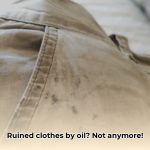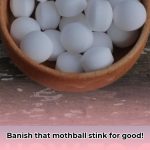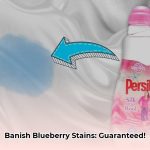Yes, brass tarnishes. It’s a natural process, like iron rusting, but much less dramatic. This guide will explain why brass tarnishes, how to clean it, and how to prevent it from happening in the first place.
Why Does Brass Lose Its Luster?
Tarnish is a thin layer of corrosion that forms on the surface of brass. It’s a chemical reaction between the copper in the brass and sulfur-containing substances in the air, like hydrogen sulfide. Moisture acts as a catalyst, speeding up this reaction. So, humid environments tend to accelerate tarnishing. Air pollution can also contribute.
The specific mix of metals in your brass also influences how quickly it tarnishes. Brass with a higher zinc content is generally more resistant to tarnishing.
Bringing Back the Shine: Cleaning Tarnished Brass
There are several ways to clean tarnished brass, ranging from simple household solutions to commercial cleaners.
Easy Solutions for Light Tarnish
- Soap and Water: For light tarnish, a gentle wash with warm, soapy water and a soft cloth is often enough. Dry thoroughly afterward to prevent water spots.
- Non-Gel Toothpaste: Use a small amount on a soft cloth or old toothbrush. Rub gently, rinse, and dry.
More Powerful Methods for Moderate Tarnish
- Vinegar Paste: Mix equal parts white vinegar and flour, then slowly add salt until you create a paste. Apply to the tarnished brass, let it sit for about an hour, then rinse and dry.
- Ketchup: The mild acidity in ketchup can help dissolve tarnish. Apply a thin layer, let it sit for a few minutes, then rinse and buff with a soft cloth.
- Lemon and Salt: Rub a cut lemon sprinkled with salt directly on the tarnished brass. Rinse and dry.
Heavy-Duty Solutions for Stubborn Tarnish
- Commercial Brass Cleaners: For heavier tarnish, a commercial brass cleaner may be necessary. Always follow the product instructions and test in an inconspicuous area first.
Here’s a quick reference table:
| Cleaning Method | Tarnish Severity | Special Notes |
|---|---|---|
| Mild Soap and Water | Light | Ideal for regular cleaning and lacquered brass |
| Non-Gel Toothpaste | Light/Moderate | Convenient for smaller items and touch-ups |
| Vinegar, Salt, Flour Paste | Moderate | A powerful DIY solution |
| Ketchup | Moderate | Surprisingly effective, quick, and readily available |
| Lemon and Salt | Moderate | A natural cleaning alternative |
| Commercial Brass Cleaner | Heavy | For the most stubborn tarnish cases |
Preventing Tarnish: Keeping Brass Gleaming
Prevention is the best way to maintain your brass’s shine. Here’s how:
Protecting the Surface
- Lacquer: Many brass items come with a lacquer coating. This protective layer helps prevent tarnish. Avoid abrasive cleaners that can damage it. Even car wax, given its protective nature akin to lacquer, could be beneficial. Apply just as you would on a vehicle, let it dry, and buff for a slightly enhanced shine.
- Polish: Regularly polishing your brass not only cleans it but also adds a thin protective layer. Use a polish specifically designed for brass.
Controlling the Environment
- Dust Regularly: Dusting removes corrosive elements that contribute to tarnish.
- Smart Storage: Store brass in a cool, dry place away from direct sunlight, humidity, rubber, and certain sulfur-containing foods. Airtight containers or wrapping items in a soft, lint-free cloth is recommended. Consider using silica gel packets in storage containers to absorb moisture.
- Humidity Control: Reducing humidity in your home can help prevent tarnish.
Beyond the Basics: Other Considerations
Different Brass Alloys
Not all brass is created equal. Some alloys, especially those with higher zinc content, are more resistant to tarnish.
Alternatives to Brass
If you’d prefer to avoid tarnish altogether, consider alternative metals like stainless steel or nickel silver.
Antique Brass
For antique brass restoration, it’s best to consult a professional to avoid damage.
Ongoing Research
Research into tarnish prevention and removal is ongoing. Keep an eye out for new products and techniques.
By understanding why brass tarnishes and taking preventative measures, you can keep your brass items looking their best for years to come.
- How to Get Motor Oil Out of Clothes: Proven Methods & Step-by-Step Guide - April 25, 2025
- How to Get Mothball Smell Out of Clothes: A Complete Guide - April 25, 2025
- How to Get Highlighter Out of Clothes: Easy & Effective Stain Removal Guide - April 25, 2025










